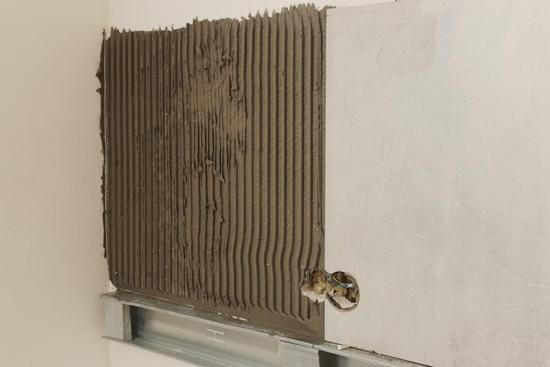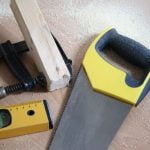Making improvements to your home can not only enhance your living space but also increase the value of your property. However, financing these projects can be a challenge for many homeowners. One option to consider is getting a loan specifically for home improvements. In this article, we will explore the pros and cons of taking out a loan for your home improvement projects, helping you make an informed decision about whether it is the right choice for you.
Before delving into the details, it is important to understand the significance of home improvement projects and how they can add value to your property. Whether it’s renovating your kitchen, replacing old windows, or adding an extra bedroom, these upgrades have the potential to increase both the aesthetic appeal and market value of your home. However, determining the scope of your plans is crucial in deciding if securing a loan is necessary.
When considering a loan for home improvements, it’s essential to explore different types available. From personal loans to home equity loans or lines of credit, each option has its own advantages and drawbacks. By understanding these options and evaluating their suitability based on your financial situation and goals, you can navigate through potential risks while making an informed decision.
In this article, we will delve into various aspects related to getting a loan for home improvements such as weighing the pros and cons, assessing your financial situation, exploring alternatives to loans, seeking expert advice from financial advisors, and ultimately helping you make a well-rounded decision on whether obtaining a loan is indeed worth it.
The Importance of Home Improvement Projects
Home improvement projects can greatly enhance the value of your property, making it a worthwhile investment. Whether you are considering selling your home in the near future or simply want to improve your living conditions, understanding the importance of these projects is crucial. This section will delve into how home improvements can add value to your property and why they should be considered.
The Benefits of Home Improvement Projects
Undertaking home improvement projects can yield several benefits for homeowners. One of the primary advantages is the increase in property value. Upgrading key areas such as kitchens, bathrooms, and outdoor spaces can significantly elevate the market worth of your home. These improvements not only make your living space more enjoyable, but they also attract potential buyers if you decide to sell.
Another benefit is the enhanced functionality and comfort that comes with a well-executed home improvement project. By upgrading outdated features or adding new amenities, you can customize your living space to better suit your lifestyle needs. For instance, installing energy-efficient appliances not only reduces utility bills but also contributes to environmental sustainability.
Furthermore, home improvement projects can improve the curb appeal of your property. Enhancing exterior features like landscaping, siding, and roofing can create a lasting impression and make your house stand out in the neighborhood. The visual appeal and overall condition of a house play a vital role in attracting potential buyers and increasing its overall value.
Increase Property Value
One of the main motivations for homeowners to embark on home improvement projects is increasing their property’s value. By keeping up with current trends and making necessary updates, you can maximize returns on investment if you eventually decide to sell your house. Upgrades such as remodeled bathrooms or kitchens have consistently shown high returns when it comes to resale value.
Moreover, certain types of renovations have been proven to add significant monetary value. For example, adding an extra bedroom or converting an existing space into a usable room like a home office or gym can have a substantial impact on your property’s worth. It is essential to consider the needs and preferences of potential buyers when deciding which improvements to prioritize.
Evaluating the Scope of Your Home Improvement Plans
When considering whether or not to get a loan for home improvements, it is important to evaluate the scope of your plans. Determining if a loan is necessary will help you make an informed decision and avoid unnecessary debt. Here are some key points to consider when evaluating the scope of your home improvement plans.
- Assess the scale of your project: Start by determining the size and complexity of your home improvement project. If you are planning small upgrades or minor renovations that can be easily paid for out of pocket, taking a loan may not be necessary. On the other hand, if your project involves major renovations or additions that require a significant amount of money, a loan might be a viable option.
- Consider the time frame: Another factor to consider is the time frame in which you plan to complete your home improvement project. If you need to make immediate repairs or upgrades due to safety concerns or urgent needs, a loan could provide you with quick access to funds.
However, if your project is more long-term and can be done gradually over time, saving up and paying for it without taking on debt may be more financially advantageous. - Evaluate potential return on investment: It is important to assess whether the improvements you plan to make will increase the value of your property significantly. If your home improvement plans have the potential to add substantial value to your property, obtaining a loan could be a smart investment. However, if the improvements are purely cosmetic and do not have a significant impact on property value, it may not be wise to take on additional debt.
Different Types of Loans Available for Home Improvements
There are several different types of loans available for home improvements, each with their own advantages and considerations. By exploring your options, you can determine which type of loan is best suited to your specific needs and financial situation.
- Home Equity Loans: One popular option for financing home improvements is a home equity loan. This type of loan allows you to borrow against the equity you have built up in your home.
The loan amount is typically based on the appraised value of your property minus any outstanding mortgage balance. Home equity loans often come with fixed interest rates and predictable monthly payments, making them a stable choice for those who prefer consistency in their budgeting. - Home Equity Lines of Credit (HELOC): Similar to a home equity loan, a HELOC also allows you to borrow against the equity in your home. However, instead of receiving the funds upfront like a lump sum, a HELOC provides you with a line of credit that can be drawn upon as needed.
This flexibility can be advantageous when it comes to financing ongoing or larger-scale home improvement projects. It’s important to note that HELOCs usually come with variable interest rates that may change over time. - Personal Loans: If you don’t have substantial equity in your home or prefer not to use it as collateral, personal loans are another option for funding your home improvements. These unsecured loans are typically based on factors such as your credit score, income, and debt-to-income ratio.
Personal loans offer more flexibility than home equity loans because they can be used for any purpose and do not require collateral. However, they often come with higher interest rates compared to secured loans. - Government Programs: In addition to traditional bank loans, there are also government programs available for financing home improvements. For example, the Federal Housing Administration (FHA) offers Title I Property Improvement Loans that are insured by the government but provided by private lenders. These loans are specifically designed for home improvements and can be a good option for individuals who may not qualify for traditional loans.
By considering the different types of loans available, you can make an informed decision on which option aligns best with your specific needs and financial goals. It’s important to thoroughly research each type of loan, comparing factors such as interest rates, repayment terms, and any additional fees or requirements. Consulting with a financial advisor can also provide valuable insights and guidance to help you choose the most suitable loan for your home improvement project.
Pros of Getting a Loan for Home Improvements
Getting a loan for home improvements can be a worthwhile investment with several advantages. Here are some of the pros to consider:
- Increased Property Value: One of the primary benefits of getting a loan for home improvements is the potential increase in property value. By making upgrades and renovations, you can enhance the overall appeal and functionality of your home, making it more desirable to potential buyers in the future. This can result in a higher resale value and a greater return on investment.
- Enhanced Comfort and Quality of Life: Home improvement projects often focus on improving comfort and enhancing the living experience for homeowners. Whether it’s upgrading your kitchen appliances, installing energy-efficient windows, or remodeling your bathroom, these enhancements can improve your day-to-day life by making your home more comfortable and convenient.
- Lower Energy Costs: Many home improvement projects are geared towards energy efficiency, such as installing solar panels or upgrading insulation. These upgrades can help reduce your energy consumption and lower utility bills over time. While the upfront costs may be higher, the long-term savings can make getting a loan for these improvements financially beneficial.
| Benefit | Data |
|---|---|
| Return on Investment (ROI) | Average ROI for major kitchen remodel: 54% |
| Energy Efficiency Savings | Average annual savings from solar panel installation: $600 – $1,000 |
| Increase in Property Value | Average increase in home value after bathroom renovation: $10,000 – $20,000 |
Ultimately, the decision to get a loan for home improvements will depend on your specific needs and financial situation. It’s important to carefully consider the potential benefits and weigh them against the associated risks and costs before making a decision.
Cons of Getting a Loan for Home Improvements
Increased Debt
One of the main drawbacks of getting a loan for home improvements is the potential increase in debt. Taking out a loan means you are borrowing money that you will need to repay, usually with interest. This can add a significant financial burden, especially if you already have existing debts such as a mortgage or car loan. It is important to carefully consider if taking on additional debt is the right decision for your financial situation.
Interest Payments
When you take out a loan, you will be required to pay interest on the borrowed amount. Depending on the terms of the loan, this interest can add up over time and significantly increase the total cost of your home improvement project. Before deciding to get a loan, it is crucial to carefully review and compare interest rates from different lenders to ensure you are getting the best possible deal.
Risk of Default
Another risk associated with getting a loan for home improvements is the potential risk of defaulting on your payments. If for any reason you are unable to make your monthly payments, you could face serious consequences such as late fees, damage to your credit score, and even foreclosure in severe cases. It is essential to evaluate your current income stability and ability to meet monthly loan obligations before taking on additional financial commitments.
Potential Over-Improvement
Getting a loan for home improvements can sometimes lead homeowners to over-improve their property. While it’s tempting to create high-end upgrades or renovations, it’s important to consider if the potential value added by these improvements will exceed their cost when it comes time to sell your home. Over-improving may not result in a return on investment and could potentially leave you in a worse financial position when it comes time to sell.
Considering these potential risks and drawbacks can help you make an informed decision about whether getting a loan for home improvements is the right choice for you. It is crucial to carefully evaluate your financial situation, determine if you can afford the loan and its associated costs, and consider alternative funding options before committing to a loan.
Making a well-informed decision will ultimately help ensure that your home improvement project is financially viable and does not lead to unnecessary financial stress in the long run.
Assessing Your Financial Situation
When considering whether to get a loan for home improvements, it is crucial to assess your financial situation to determine if you can afford the loan. Taking on additional debt should not be taken lightly and requires a careful evaluation of your income, expenses, and overall financial health.
First and foremost, you need to take a close look at your current income and budget. Calculate how much money you have coming in each month and compare it to your expenses. Consider all your monthly bills, such as mortgage or rent payments, utilities, insurance, groceries, transportation costs, and other necessary expenses. It is essential to ensure that taking on a loan for home improvements will not strain your budget too much.
Next, evaluate any existing debt you may have. This includes credit card debt, student loans, car loans, or any other outstanding loans or balances. Are you currently able to comfortably make the monthly payments on these debts? Adding another loan for home improvements could increase your monthly financial obligations significantly.
Additionally, consider your savings and emergency funds. It is generally recommended to have an emergency fund equivalent to three to six months’ worth of living expenses. If you do not have adequate savings set aside or are relying heavily on credit cards for emergencies, taking on more debt with a loan may not be wise.
Finally, think about any future financial goals or obligations that may affect your ability to afford a loan for home improvements. Are you planning on starting a family? Will there be any significant life events in the near future that may require additional funds? These considerations are essential in determining if adding more debt through a loan would be financially feasible in the long term.
Alternatives to Getting a Loan for Home Improvements
When considering home improvement projects, getting a loan may not always be the best option for everyone. Fortunately, there are alternative funding options available that can help you achieve your renovation goals without taking on additional debt. Exploring these alternatives can provide you with more flexibility and potentially save you money in the long run.
One alternative to getting a loan for home improvements is utilizing your savings or emergency funds. If you have been diligently saving money or have an emergency fund set aside, using those funds for your home improvement projects can be a wise decision. By using your own money, you avoid paying interest and fees associated with loans. However, it is important to carefully consider whether using your savings will leave you with enough funds for emergencies or other financial obligations.
Another alternative funding option is utilizing a home equity line of credit (HELOC). HELOCs allow homeowners to borrow against the equity they have built up in their homes. This type of financing often offers lower interest rates compared to traditional personal loans and credit cards. Additionally, the interest paid on a HELOC may be tax deductible, making it an attractive option for some homeowners.
Lastly, homeowners could explore grants and assistance programs offered by government agencies or non-profit organizations. These programs are designed to provide financial assistance specifically for certain types of home improvements, such as energy-efficient upgrades or accessibility modifications for people with disabilities. Researching and applying for grants and assistance programs could potentially save homeowners a significant amount of money while still allowing them to make necessary improvements.
Exploring these alternative funding options requires careful consideration of your unique financial situation and specific goals for home improvement projects. Comparing the benefits and drawbacks of each option will help you determine which choice is best suited to meet your needs.
Expert Advice
When it comes to financing home improvement projects, seeking expert advice from financial advisors can be invaluable. These professionals have extensive knowledge and experience in managing finances and can provide guidance on the best options for home improvement financing.
One piece of expert advice that financial advisors often give is to carefully consider your current financial situation before taking out a loan for home improvements. This includes evaluating your income, expenses, and overall debt. Financial advisors recommend having a solid understanding of your financial capabilities to ensure that you can comfortably afford the loan repayments without compromising other essential expenses or accumulating excessive debt.
In addition, many financial advisors suggest exploring alternative funding options before deciding to get a loan for home improvements. These alternatives may include saving up for the project, using existing savings or investments, or even tapping into home equity through a refinance or home equity line of credit (HELOC). Financial advisors point out that these alternatives may be more cost-effective since they do not involve interest payments and may incur fewer fees compared to traditional loans.
Overall, seeking expert advice from financial advisors is essential when considering financing options for home improvement projects. Their expertise can help you evaluate your financial situation and explore all available alternatives to make an informed decision that suits both your immediate needs and long-term financial goals. By doing so, you can ensure that you manage your finances effectively while realizing the benefits of enhancing your property through well-planned improvement projects.
Final Thoughts
In conclusion, the decision to get a loan for home improvements ultimately comes down to weighing the pros and cons outlined in this article and assessing your own financial situation. Home improvement projects can add significant value to your property, making it a worthwhile investment. However, it is important to carefully evaluate the scope of your plans and determine whether or not a loan is necessary.
There are various types of loans available for home improvements, each with its own advantages and drawbacks. It is crucial to explore all your options and choose the one that best suits your needs and financial capabilities. Keep in mind that getting a loan for home improvements does come with potential risks, such as accruing interest and taking on additional debt. This should be carefully considered before making a decision.
Before obtaining a loan, it is essential to assess your financial situation thoroughly. Take into account factors such as your income, expenses, current debts, and credit score. This will help you determine if you can afford to take on a loan without putting undue strain on your finances. If it seems unfeasible at the moment, there are alternative funding options worth exploring, such as saving up or seeking grants or subsidies.
Lastly, while considering whether to get a loan for home improvements, it is wise to seek expert advice from financial advisors who specialize in home improvement financing. They can provide valuable insights tailored to your specific circumstances and help you make an informed decision that aligns with your long-term financial goals.
In summary, getting a loan for home improvements can be a beneficial investment if approached thoughtfully and weighed against potential risks. By understanding the value addition that home improvements can bring, evaluating the necessity of borrowing money, exploring different types of loans available, considering other funding options if necessary, and seeking expert advice when needed – you will be able to make an informed decision that ensures both the improvement of your property and the stability of your finances.
Frequently Asked Questions
Is it smart to borrow money for home improvements?
Borrowing money for home improvements can be a smart move, depending on the circumstances. It allows homeowners to make necessary upgrades or renovations that can increase the value of their property and improve their quality of life.
However, it is important to carefully consider factors such as interest rates, repayment terms, and the potential return on investment. Homeowners should evaluate whether they have the means to comfortably repay the loan and if the improvements will truly enhance their home’s value before deciding to borrow.
Are renovation loans a good idea?
Renovation loans can indeed be a good idea for those who need financial assistance for home improvement projects. These loans are specifically designed to provide funds for renovations or upgrades and often come with attractive features such as lower interest rates compared to other types of personal loans.
They can help homeowners access larger sums of money and spread out the repayment over a longer period, making it more affordable. However, it is crucial to thoroughly research loan options and read the terms and conditions carefully to ensure there are no hidden fees or unfavorable clauses.
Is it wise to use home equity for home improvements?
Using home equity for home improvements can be a wise decision in certain situations. Homeowners who have built up significant equity in their property may find it advantageous to tap into this resource rather than borrowing from other sources with higher interest rates. By leveraging home equity, individuals can potentially secure lower interest rates and enjoy tax benefits in some cases, making it a financially sensible choice.
Nevertheless, it is important to note that borrowing against home equity puts one’s property at risk if they are unable to repay the loan in a timely manner, so careful consideration must be given before using this option for funding home improvements. Additionally, homeowners should also ensure that the projected increase in property value resulting from the improvements justifies using their equity in this way.

I’m thrilled to have you here as a part of the Remodeling Top community. This is where my journey as an architect and remodeling enthusiast intersects with your passion for transforming houses into dream homes.





